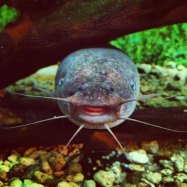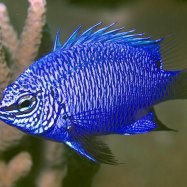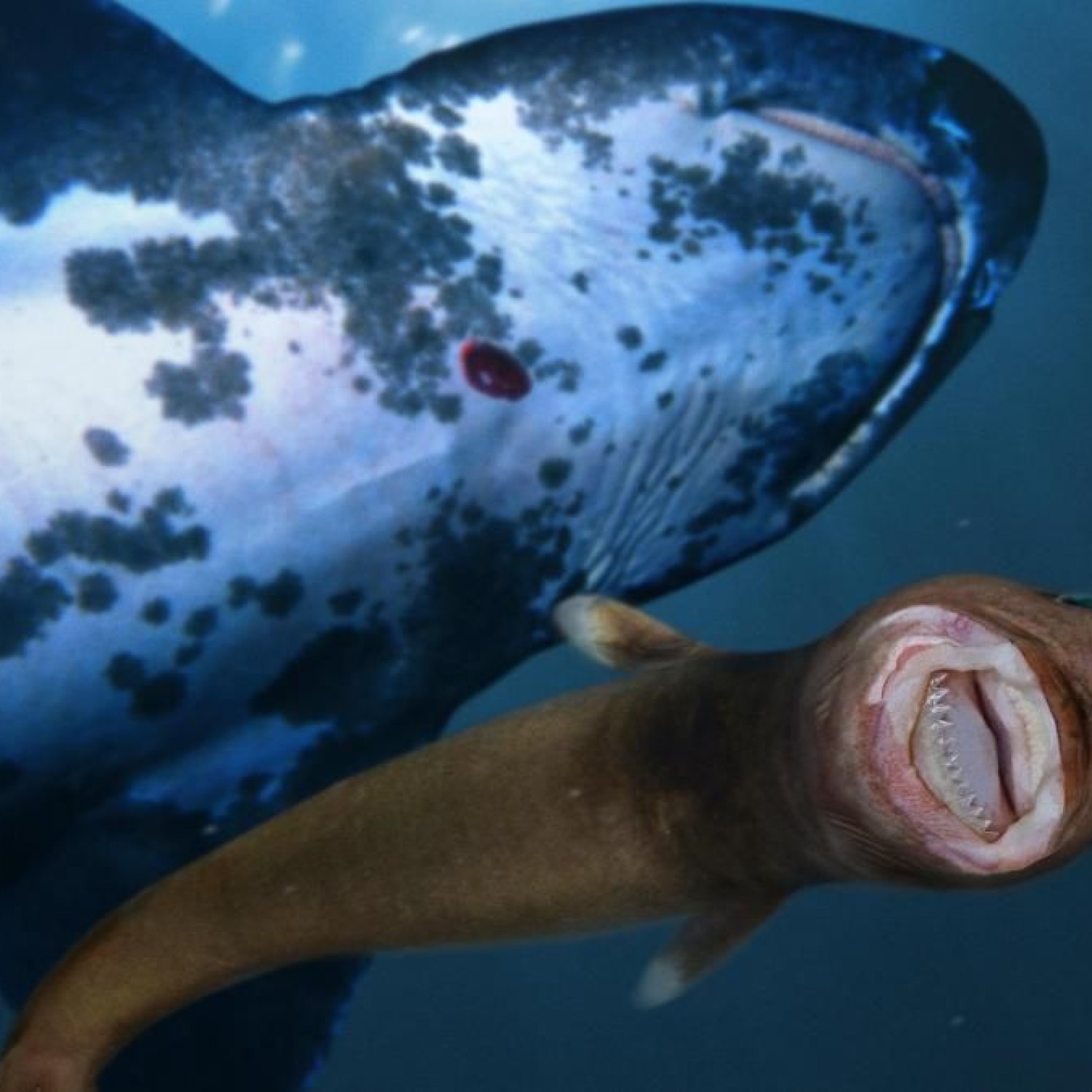
Cookiecutter Shark
20 to 22 inches (50 to 56 cm)
The Cookiecutter Shark, found in oceans worldwide, is a unique and fascinating creature with a cylindrical and robust body shape. Growing up to 22 inches long, it belongs to the Dalatiidae family and is known for its unusual feeding method of taking cookie cutter shaped bites out of its prey. Keep an eye out for this elusive shark on your next ocean adventure! #CookiecutterShark #OceanLife #FascinatingFacts
Animal Details Summary:
Common Name: Cookiecutter Shark
Kingdom: Animalia
Habitat: Marine
The Mysterious Cookiecutter Shark: A Parasitic Predator of the Deep Sea
Deep in the vast expanse of the ocean, amidst the mesmerizing blue waters, lies a creature that is shrouded in mystery and intrigue. Its name evokes thoughts of sweet treats and cozy nights by the fire, but make no mistake, the cookiecutter shark is far from being a gentle companion. With its unique feeding behavior and distinct physical characteristics, this enigmatic creature has captured the attention of scientists and fascinated ocean enthusiasts alike.The cookiecutter shark, also known by its scientific name Isistius brasiliensis, is a small and elusive species that belongs to the family Dalatiidae Cookiecutter Shark. Its common name is derived from the cookie-shaped wounds that it leaves on its prey, hence giving it the appearance of having been “cookie-cut.”
This fascinating predator can be found in the tropical and subtropical waters of the world's oceans, but its country of origin is Brazil, where it was first studied in detail. Due to its elusive nature and low frequency of sightings, little is known about the cookiecutter shark, making it a subject of great curiosity for researchers.
In this article, we will explore the mesmerizing world of the cookiecutter shark, delving into its unique characteristics, behavior, and habitat to shed some light on this mysterious creature.
The Physical Characteristics of the Cookiecutter Shark
The cookiecutter shark is a relatively small species, with adults typically measuring between 20 to 22 inches (50 to 56 cm) in length. However, size can vary, and the largest recorded cookiecutter shark was 22 inches (56 cm) long. Its body shape is cylindrical and robust, with a dorsal fin that is significantly larger than its pectoral and pelvic fins.One of the most distinctive physical features of the cookiecutter shark is its gaping mouth, which displays an array of razor-sharp teeth. These teeth are unusual in their shape, being small and pointed in the upper jaw and larger and triangular in the lower jaw Catalan Sheepdog. This unique arrangement of teeth is vital for the cookiecutter shark's feeding behavior, which we will discuss in more detail later.
One might think that a creature with such sharp teeth would have a fearsome appearance, but the cookiecutter shark's dark grey to brown coloration gives it a relatively harmless appearance. It is thought that this coloration helps the shark camouflage itself in the deep, dark ocean waters, making it less visible to its prey.
The Habitat of the Cookiecutter Shark
The cookiecutter shark is a highly migratory species, and it can be found in all of the world's oceans, except for the Arctic and Antarctic regions. Its preferred habitat is in the mesopelagic zone, between 3,280 to 13,120 feet (1,000 to 4,000 meters) below the ocean's surface. This is a deep and dark environment that is home to many other fascinating deep-sea creatures.Being a tropical and subtropical species, the cookiecutter shark can also be found in areas with warm ocean currents, such as the Gulf Stream and the Agulhas Current. This makes it a highly adaptable creature, able to thrive in a variety of deep-sea environments.
The Feeding Behavior of the Cookiecutter Shark
One of the most intriguing aspects of the cookiecutter shark is its feeding method, which is parasitic in nature. Unlike other sharks that hunt for their meals, the cookiecutter shark relies on its unique mouth and teeth to obtain its food. Using its suction-like lips and sharp teeth, the shark attaches itself to its prey and creates a circular wound, leaving behind a cookie-shaped mark.But what makes this feeding behavior truly fascinating is that the cookiecutter shark does not kill its prey. Instead, it takes small bites, leaving its prey with a debilitating wound that can be fatal. The cookiecutter shark then continuously feeds on its prey's flesh, gradually causing severe damage and ultimately leading to its death.
This feeding method is highly effective, and the cookiecutter shark's diet consists of a variety of marine animals, including larger sharks, whales, and even dolphins. The cookiecutter shark's prey is thought to be lured in by its bioluminescent markings, making it an easy target for this cunning predator.
The Role of the Cookiecutter Shark in the Ecosystem
The cookiecutter shark may be a small and elusive species, but it plays a crucial role in the deep-sea ecosystem. As a parasitic predator, it keeps the populations of various marine animals in check, preventing them from overpopulating and affecting the delicate balance of the ocean's food chain.Additionally, the cookiecutter shark's systematic removal of unhealthy or diseased individuals within a species helps maintain its overall health and vitality. It also acts as a food source for many other deep-sea creatures, including larger sharks and fish, highlighting the interconnectedness of life within the ocean.
Threats to the Cookiecutter Shark
Despite its vital role in the ocean's ecosystem, the cookiecutter shark faces several threats that put its survival at risk. The biggest threat to this species is overfishing, which is mainly driven by the demand for its liver, which is rich in valuable oil. There is also a growing market for its meat, fins, and skin, further adding to its vulnerability.Moreover, the cookiecutter shark's deep-sea habitat and elusive nature make it difficult to study and understand, leading to a lack of conservation efforts directed specifically towards this species. Increased pollution and changes in ocean temperature and acidity levels can also negatively impact the cookiecutter shark's habitat and food sources, which could have serious consequences for its survival.
The Need for Further Research and Conservation Efforts
As with most deep-sea creatures, the cookiecutter shark remains a mysterious creature, with much of its behavior and biology yet to be discovered. As our understanding of the ocean deepens, it is crucial to continue researching and studying this unique and elusive species. This will not only help us better understand the cookiecutter shark's role in the ocean but also enable us to develop effective conservation efforts to protect it.Conservation efforts must also be directed towards addressing the threats faced by the cookiecutter shark. This includes the need for sustainable fishing practices and stricter regulations on the trade and consumption of its products. Protecting its deep-sea habitat and reducing pollution is also essential in ensuring the survival and well-being of this fascinating creature.
The Enigmatic Cookiecutter Shark: A Marvel of Nature
In conclusion, the cookiecutter shark is a fascinating and enigmatic creature that has captured the imaginations of many. Its unique physical characteristics, habitat, and parasitic feeding behavior make it a truly remarkable species. Despite facing numerous threats, we must continue to explore, study, and protect this small but essential predator of the deep sea. Only then can we truly appreciate and marvel at the wonders of nature.

Cookiecutter Shark
Animal Details Cookiecutter Shark - Scientific Name: Isistius brasiliensis
- Category: Animals C
- Scientific Name: Isistius brasiliensis
- Common Name: Cookiecutter Shark
- Kingdom: Animalia
- Phylum: Chordata
- Class: Chondrichthyes
- Order: Squaliformes
- Family: Dalatiidae
- Habitat: Marine
- Feeding Method: Parasitic
- Geographical Distribution: Tropical and subtropical waters
- Country of Origin: Brazil
- Location: Oceans
- Animal Coloration: Dark grey to brown
- Body Shape: Cylindrical and robust
- Length: 20 to 22 inches (50 to 56 cm)
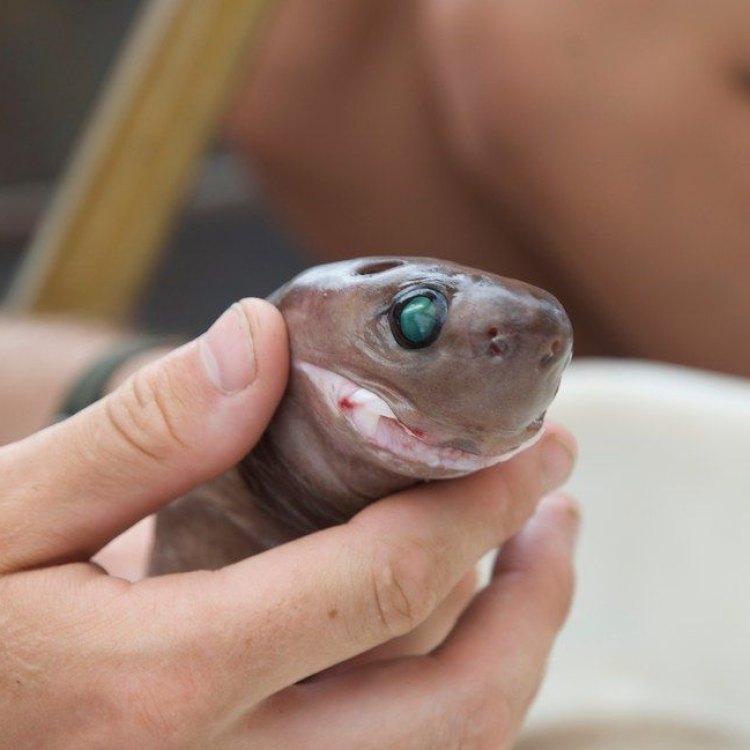
Cookiecutter Shark
- Adult Size: 20 to 22 inches (50 to 56 cm)
- Average Lifespan: Up to 24 years
- Reproduction: Ovoviviparous
- Reproductive Behavior: Unknown
- Sound or Call: None
- Migration Pattern: Unknown
- Social Groups: Solitary
- Behavior: Nocturnal
- Threats: Habitat destruction and overfishing
- Conservation Status: Near Threatened
- Impact on Ecosystem: Middle to high
- Human Use: None
- Distinctive Features: Circular scars on prey
- Interesting Facts: Cookiecutter sharks are known for their unique feeding method, where they use their specialized jaws to take circular bites out of their prey
- Predator: Large predatory fish and marine mammals
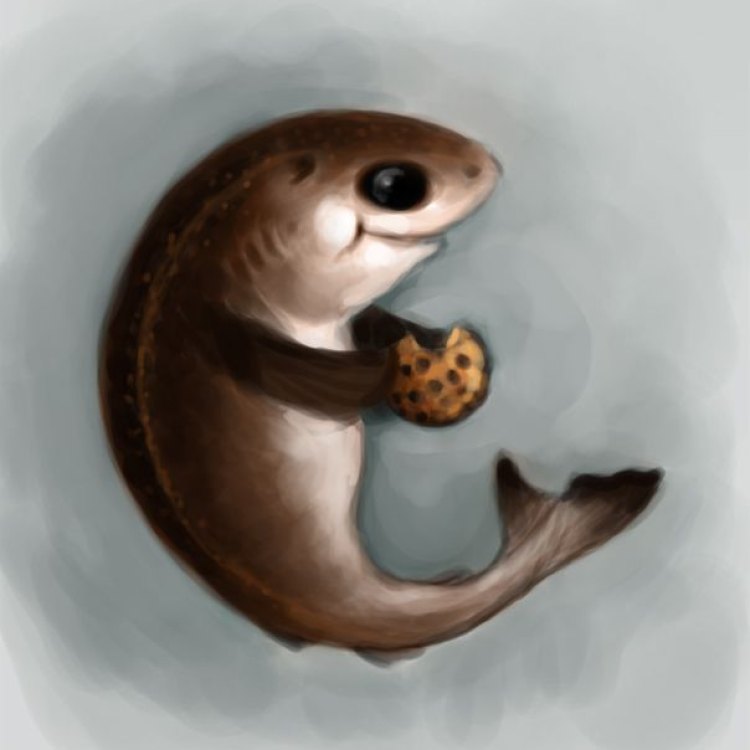
Isistius brasiliensis
The Mysterious and Mighty Cookiecutter Shark: A Master of Adaptation and Survival
The ocean is a vast and wondrous place, filled with creatures big and small, known and unknown. And among these diverse and fascinating creatures, one in particular stands out for its distinctive appearance and unique feeding behavior – the cookiecutter shark.The cookiecutter shark, also known as the cigar shark or the cookie cutter, is a small but mighty shark species found in the world's deep tropical and subtropical waters. Its name comes from its distinctive feeding method, where it takes circular bites out of its prey, leaving behind "cookie cutter-like" scars PeaceOfAnimals.Com.
But what makes this small shark species so intriguing? Let's dive deeper and uncover the hidden mysteries of the cookiecutter shark.
The Physical Attributes of a Cookiecutter Shark
The cookiecutter shark may be small, but it's packed with powerful features that make it a master of the ocean.On average, an adult cookiecutter shark can grow up to 20 to 22 inches (50 to 56 cm) in length. Its body is cylindrical, with a rounded snout and large, green eyes. Its dorsal and pectoral fins are placed near the rear of its body, giving it a unique appearance.
However, what truly sets the cookiecutter shark apart is its jaw. It has a unique set of lower jaw teeth that are perfect for its specialized feeding technique. The lower teeth are arranged in a way that forms a circular mouth, with a long central tooth surrounded by smaller triangular teeth.
This unique jaw structure allows the cookiecutter shark to latch onto its prey and take circular bites, leaving behind telltale scars on its unfortunate victims Cat Eyed Snake.
The Life and Times of a Cookiecutter Shark
Cookiecutter sharks are a mysterious species, and there is still much to learn about their behavior and habits. However, here's what we do know about their life and times.These solitary creatures are primarily known to inhabit the deep ocean waters, between 980 to 11,480 feet (300 to 3,500 meters) below the surface. They are most commonly found in tropical and subtropical regions, including the Caribbean Sea, the Gulf of Mexico, and the Hawaiian Islands.
Cookiecutter sharks are nocturnal, which means they are active at night. During the day, they stay deep in the ocean, only emerging at night to hunt for their prey. Their preferred meals include large predatory fish and marine mammals, such as dolphins and even whales.
While we know that cookiecutter sharks are ovoviviparous, meaning they give birth to live young, we still don't know much about their reproductive behavior. It is believed that females produce a relatively small number of offspring, with each pregnancy lasting around 18 months.
Threats and Conservation Status
Sadly, like many other shark species, cookiecutter sharks are facing numerous threats that put their survival at risk.One of the most significant threats to cookiecutter shark populations is habitat destruction. As humans continue to exploit the ocean's resources, these small sharks lose their homes and their prey, making it difficult for them to survive and reproduce.
Overfishing is also a major threat to cookiecutter sharks. While they are not intentionally targeted, they often become bycatch in nets and caught on longlines meant for other species. Additionally, the decline of their prey population, such as tuna and swordfish, also affects their survival.
As a result, the International Union for Conservation of Nature (IUCN) has categorized the cookiecutter shark as "Near Threatened" on the Red List of Threatened Species. This means that the species is at risk of becoming endangered if conservation efforts are not implemented.
The Impact of Cookiecutter Sharks on the Ecosystem
It may seem like cookiecutter sharks have little impact on their ecosystem due to their small size, but that is not the case. In fact, their role in the food chain is crucial for maintaining a healthy ocean ecosystem.As opportunistic feeders, cookiecutter sharks can help to control the population of their prey species, preventing overpopulation and maintaining a balance in the food chain. They also provide a food source for larger predators, such as bigger sharks and marine mammals, making them essential for the ocean's biodiversity.
Human Use and Interesting Facts
Unlike other shark species, cookiecutter sharks have no known human use. They are not commercially fished, and their small size and deep-dwelling nature make them unsuitable for aquariums.But, that doesn't make them any less fascinating. Here are some interesting facts about cookiecutter sharks that will leave you in awe:
- These small but mighty sharks can live up to 24 years, making them one of the longest-lived shark species.
- They are known for their ability to adapt and survive in harsh environments, making them one of nature's most resilient creatures.
- Cookiecutter sharks have a unique way of avoiding predators. They are covered in tiny light-producing cells, known as photophores, which help them to camouflage and escape from larger predators.
- These sharks also have a symbiotic relationship with a species of copepod, where they attach themselves to the shark and hitch a ride, receiving food and protection in return.
In Conclusion
The cookiecutter shark may not be the biggest or most well-known shark in the ocean, but it certainly has its unique charm and significance in the underwater world. Its distinctive features, mysterious behavior, and impressive adaptability make it a fascinating species to study and admire.However, with increasing threats to their survival, it is crucial that we take steps to protect and conserve the cookiecutter shark and other shark species. By doing so, we not only preserve their existence but also ensure the health and balance of our oceans for future generations.

The Mysterious Cookiecutter Shark: A Parasitic Predator of the Deep Sea
Disclaimer: The content provided is for informational purposes only. We cannot guarantee the accuracy of the information on this page 100%. All information provided here may change without prior notice.


